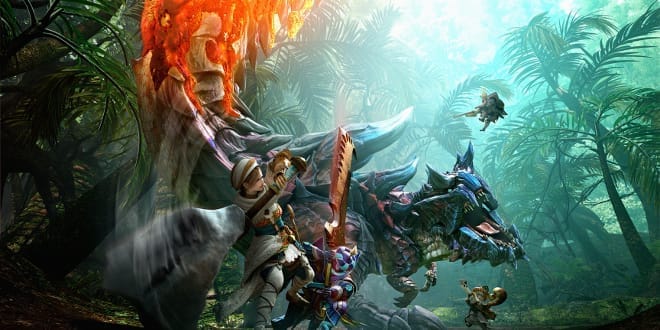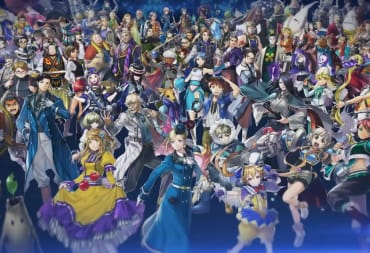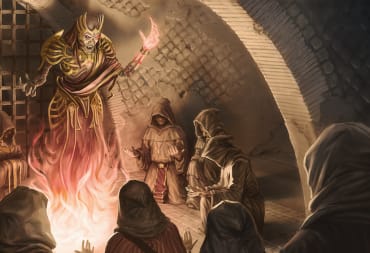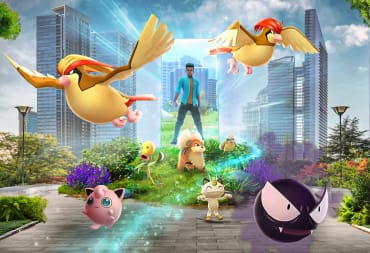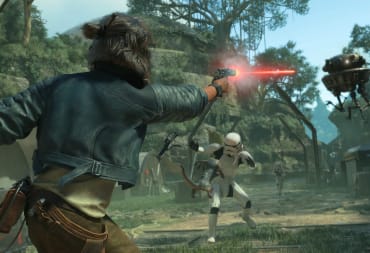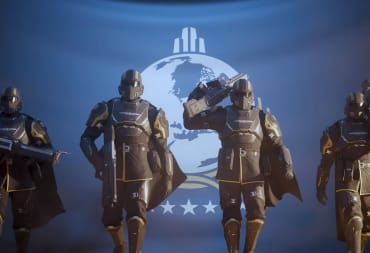When I reviewed Monster Hunter 4 Ultimate last year, what sold me on the title was the cohesiveness of all the games' new features working together and its renewed interest in vertical level design. Monster Hunter Generations suffers from its shackles as an experimental title, but for the most part, manages to bring the series forward in much the same way.
For players unfamiliar with the series, Monster Hunter is a game primarily about boss fights. Players explore a variety of segmented maps that represent prime habitats for giant monsters, gathering resources and dealing with smaller enemies. However, the forefront aspect of the series is the loop of fighting monsters, collecting resources, upgrading your equipment, and then fighting stronger monsters. Although each numbered title tends to bring a massive change to the combat system in one way or another (Monster Hunter Tri introduced 3D underwater combat, whereas Monster Hunter 4 Ultimate focused on vertical movement and almost aerial combat) the loop has remained the same. Monster Hunter Generations is no different.
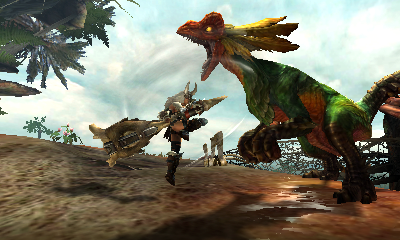
What does set Monster Hunter Generations apart are its new features. These primarily consist of the Hunting Styles and Hunter Arts systems. Combat in Monster Hunter Generations is mostly the same decidedly slow, meaty combat as Monster Hunter 4 Ultimate. Hunting Arts and Hunting Styles have the potential to completely change how you proceed with each fight. Hunting Arts are chargeable special moves that your hunter can activate. They can be as simple as a dodge, or as complex as powerful weapon-specific abilities. The latter skills can be anything from a buff to a counter, to something even more unique.
Hunting Arts would probably be enough to make Monster Hunter Generations' combat feel fresh, but Hunting Styles are the star of the show. These four styles represent a different way of fighting monsters, and when equipped drastically change a weapons' moveset. Although Guild and Striker style are mostly the same thing on the surface, both Adept and Aerial style showcase two completely different methods of fighting monsters. Adept style asks players to focus on dodging attacks at the last second before counter-attacking. Aerial style lets players bounce off of either monsters or other allies to utilize an absolute onslaught of special aerial attacks.
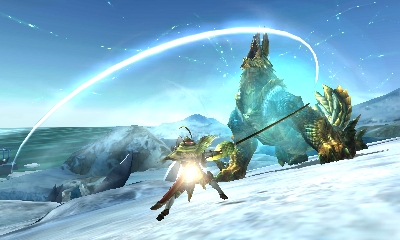
Aerial style also helps mitigate one of the biggest problems of Monster Hunter Generations. Although the title scores big by bringing back remastered versions of some maps that haven't been seen since Monster Hunter 3 Ultimate or even earlier, many of these maps simply weren't designed with the series' new vertical gameplay in mind. For the most part, these areas do a good job of capturing the series' modern design tendencies, but Aerial style helps smooth over the rest of these areas' faults. In addition to these newer stages, Monster Hunter Generations also includes most of the maps from Monster Hunter 4 Ultimate as well. The title does include one or two completely new maps, but for the most part, the areas you'll traverse are old favorites rather than new creations.
The other main features that Monster Hunter Generations boasts are the Prowler system, the Request log, Deviant monsters, and Hyper monsters. Prowlers are a fancy way of saying that players can now play as their Palico companions - warriors of the in-game Felyne race that until now have been AI assistance for players in the offline component of each game.
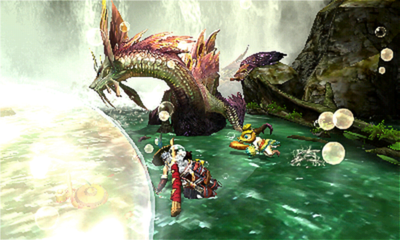
Built as an extension of the Palico system from Monster Hunter 4 Ultimate, players can recruit and raise a variety of cats for use either as helpers with the trading facility or as companions on a hunt. Prowlers are as simply explained as players choosing to play as their trained Felyne companions. You raise them like any other Palico, from their skills to their equipment to their recruitment. They aren't as efficient at combat as regular hunters, but they still manage to be an interesting option that is especially suited for players new to the series. Even for veteran hunters, Prowlers have their uses in Gathering Quests, as well as their own brand of Prowler-exclusive quests.
As far as the Request Log feature goes, it acts as an extension of the sidequests feature from Monster Hunter 4 Ultimate. Monster Hunter Generations lacks an engaging single-player campaign like the one that Monster Hunter 4 Ultimate included, but sidequests return expanded around the idea of the four towns that players can visit and take quests for. Each quest that a player accepts will have one of five different affiliations; one represents a "neutral" quest (most of the quests required to advance in the game are these), and the other four represent one of the four villages - Bherna, Kokoto, Pokke, and Yukumo. These latter three villages return from the PSP Monster Hunter titles and are central to the lacking story content that Monster Hunter Generations ends up including.
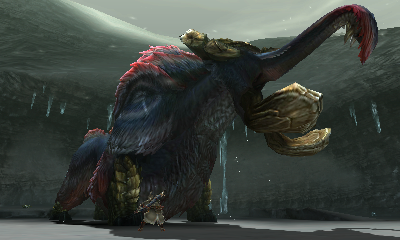
To expand upon the Request Log, each time you complete a quest for a village you'll gain an affinity towards it. The more quests you complete for that village, the more quests you'll be able to accept from that village and the more items and perks you'll unlock. Between offline and online village-exclusive quests to unlock, Monster Hunter Generations includes the highest number of unique quests in the series to date. That being said, it's hard to gauge whether or not that's a good offset for the removal of both Expeditions and Guild Quests from Monster Hunter 4 Ultimate.
Deviant monsters replace two features from Monster Hunter 4 Ultimate - Monster subspecies (recolored and retooled variations of Monsters based on an alternate environment) and Guild Quests. Each of the 12th Deviant monsters takes the defining aspects of the monster they're derived from and turn them up to 11. For example; a regular Rathalos flings fireballs everywhere. On the flip side, a Deviant Rathalos has a moveset centered around larger and unique fire techniques in addition to the standard Rathalos attack pattern. Equipment crafted from Deviant monster parts have special characteristics at higher levels and encapsulate Generations' end-game.
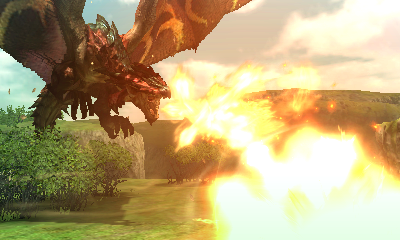
To register quests to hunt these special beasts requires a host player to pay a set amount of Special Permits for that monster, with the number depending on the level of the quest. Only one player has to pay this special fee. That being said, once a player runs out of these permits, they'll either have to use in-game points to purchase more - or receive the passes from StreetPassing other players.
Deviant monsters highlight another major change to Monster Hunter Generations - the weapon upgrade system. In previous games, whenever you wanted to upgrade your weapon you'd have to jump immediately from one "form" to another. If you didn't have enough materials to upgrade your weapon, you wouldn't be able to make it any stronger. Monster Hunter Generations expands upon a system that the Monster Hunter developers experimented on in the Japan-exclusive Monster Hunter Portable 3rd which lets players level up a weapon if they either don't want to upgrade it or simply can't.
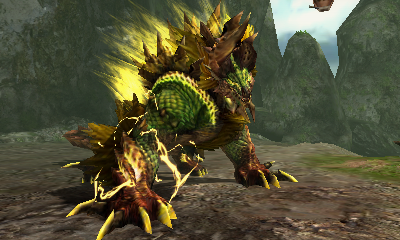
Using one specific material, money, and a mix of other generic materials players can augment their weapons strengths and unlock new potential upgrades in the process. It helps drastically bring down the necessity for grinding from previous games, and without it, the endgame loop of grinding for Deviant monster equipment would become an even worse pain.
One of the biggest drags of the Monster Hunter Generations endgame is the repetitiveness of grinding the same Deviant monster dozens of times just to be able to upgrade that monsters' equipment. To make matters worse, Deviant monster armor unique skills aren't activated until their armor is leveled past level 6. Each level-up requires two tickets proportional to the equipment's level - equal to the number of tickets a player will get from battling the beasts in question. Essentially, players will have to fight a monster thirty times to upgrade their respective armor sets to the point where they start becoming useful.
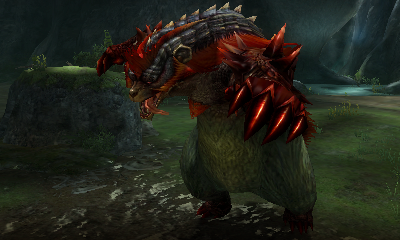
Monster Hunter Generations includes returning monsters from Monster Hunter 4 Ultimate as well, and it's not like the Deviant monsters aren't interesting to fight - but even then, after a certain number of times fighting them the repetitiveness of the whole endeavor wears thin. Generations also includes seven new Large monsters for players to fight outside of the Deviants - that's about average for each new successive game in Japan, but it's down from what Western players might expect following the jump to Monster Hunter 4 Ultimate. The "Fated Four" - a group of four "flagship monsters" that represent each village in Monster Hunter Generations - are especially interesting, but when the game groups them all under the same umbrella it ironically makes them feel less special than they would've been individually.
Besides a few other improvements (like the cooking system, for pre-quest buffs), the final major addition that Monster Hunter Generations includes are the late-game Hyper monsters. They more or less replace both the Frenzied and Apex monsters from Monster Hunter 4 Ultimate, taking the best aspects of their designs and polishing their overall concept.
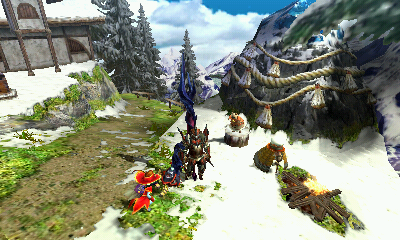
One of the major complaints players had with Apex monsters was that they required players to constantly apply "wystones" to their weapons to effectively damage them, or attack very specific points on their body. Hyper monsters turn this concept around by not requiring anything to be hit normally, but rather fill players Hunter Art gauges faster if they hit the monster's possessed body part. Hyper monster parts are required for end-game level-ups and upgrades for most weapons. Besides Deviant monsters, they could be considered the focus of the endgame.
On the multiplayer side of things, Monster Hunter Generations is nearly identical to Monster Hunter 4 Ultimate. One major change is that players can now upgrade their weapons and save without leaving the Hunters' Hub. The other major change is that the character limit for text chat during online play has been greatly improved. There's still no built-in voice chat function, though at this point I'm willing to bet it's impossible for the 3DS hardware, so I find it hard to fault Capcom for being incapable of including it. Other, less important multiplayer features like Hunters for Hire return from Monster Hunter 4 Ultimate as well.
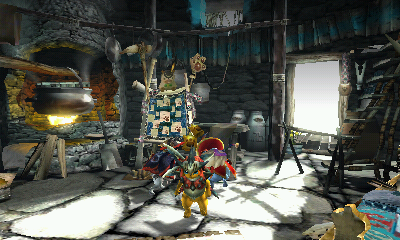
Speaking of the 3DS hardware, that brings up the last major nitpick I have with Generations - unlike Monster Hunter 4 Ultimate, it's locked to 30fps when played on a New 3DS. Granted, there a lot of new graphical effects in the title - but it's still more than a little disappointing to see.
Although Monster Hunter Generations isn't exactly the sort of series evolution that Monster Hunter 4 Ultimate was, it's still the most interesting Monster Hunter to date. Monster Hunter 4 Ultimate might just edge out Generations for newer players with its engaging single-player story. Even then, Monster Hunter Generations is a game that you absolutely do not want to miss.
Review Summary
Although Monster Hunter Generations isn't exactly the sort of series evolution that Monster Hunter 4 Ultimate was, it's still the most interesting Monster Hunter to date. Monster Hunter 4 Ultimate might just edge out Generations for newer players with its engaging single-player story - but even then, Monster Hunter Generations is a game that you absolutely do not want to miss.
(Review Policy)Have a tip, or want to point out something we missed? Leave a Comment or e-mail us at tips@techraptor.net
